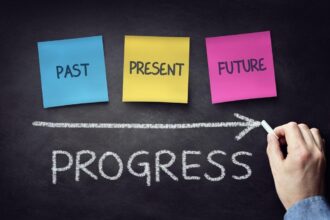“I know what the numbers say,” more than one client has told me after looking at a positive statistical analysis suggesting they’ll not likely run out of money, “but I just don’t know how to be comfortable spending in retirement.”
And who could blame them? Half of the financial world focuses on how woefully underprepared most Americans are for retirement and the other half fixates on a 3%, 4%, or 5% “safe” withdrawal rate—designed to help retirees leave this earth with as much money as they saved for retirement. It’s no wonder they’re scared.
Yet I think there’s another factor in play here that doesn’t bear any numbers or percentages, and that is the intensity of anxiety that grips many newly retired who’ve crossed a threshold from accumulation to decumulation, and that is the power of disempowerment.
The Power Of Disempowerment
It makes total sense. Someone who has been working for 30, 40, or even 50 years—a genuinely productive member of society—steps away from what is likely the height of their career accomplishments, peak earnings, and maximum saving years.
Despite being in the highest marginal tax bracket they’ve ever been in, their varied income streams, tax-preferential savings mechanisms, and charitable giving provided flexibility at tax time.
Sure, they’d made plenty of financial missteps and investment snafus throughout their working years, but they had the time, income, and savings to make up for their indiscretions.
Now it’s no more high fives or pats on the back, no more W-2 income, much less (perceived) flexibility with taxes, subject to the whims of the market, and an abundance of free time to fret over it. Little to no control.
Let’s face it: Despite the blissful vision of retirement cast by the big financial companies’ commercials featuring an endless cycle of golf courses, grandkids, sailboats, and marine mammals, retirement can be surprisingly disempowering.
“Lifetime habits of discipline and prudence aren’t easily dismissed just because you reach what you’re told is a different ‘stage’ of life,” Dr. Brian Portnoy, founder of Shaping Wealth, an advisory consultancy, told me. “Habits are part of our identity, and each of us defends our identity fiercely.”
How, then, can current or soon-to-be retirees take these steps with confidence? How can they take the proverbial power back?
Take The Power Back
The road to confidence in retirement is going to be different for each individual and family, but here are a few ways that anyone can remain empowered in retirement:
1) Phase into retirement.
From a mental, physical, and financial perspective, there is a strong case for phasing into retirement. Financially, the benefits are many. Instead of flipping a switch from accumulation to decumulation, maybe you stop contributing to your retirement accounts but let them grow in this first phase before turning the income spigot on. Perhaps you delay taking Social Security retirement benefits a bit longer, increasing what is likely the only source of fixed income most have with an automatic inflation-adjusted increase.
Physically, you’re more active for longer, and mentally, your identity shift becomes more of a journey than a cliff dive.
2) Never stop “working.”
Part of this first phase in retirement might even be taking on a role for lesser pay that feels more closely related to your true identity rather than the utilitarian approach to work that maximizes pay for time. I have clients who’ve used this retirement phase to teach at the college level, write a book, tend a farm, and start or partner with a non-profit that serves a near-and-dear cause.
Even if you choose or are forced to give up a job, some form of work may still be the key to a healthy retirement. This is why I encourage all, and especially retired clients, to stay active in annual goal setting. Even if the goals are to visit each of the grandchildren at college, craft a vacation for the extended family, or lead a study at church or synagogue—it’s less important what these goals are than why you pursue them.
3) Build an investment portfolio designed for retirement.
Your portfolio in retirement serves several different personal needs, but most walk into this phase of life with a singular approach to their investments. It’s one of the reasons some people struggle to stick with a standard 60/40 or 50/50 or whatever ratio portfolio—it is not clearly connected to their actual goals in retirement. And, from this singular portfolio approach, retirees are often asked to abide by a single number—a percentage of their portfolio that is statistically tested to (hopefully) preserve their assets throughout retirement.
The generally accepted number is 4%. That is, if you draw only 4% of your retirement portfolio annually, you will likely leave this earth with as much or more than you entered retirement with. My colleague and co-founder of SignatureFD, Doug Liptak, calls it “The 96% Problem,” suggesting that the myopic focus on a sustainable withdrawal rate ignores the purpose of the money in the first place.
“The stark reality of the 96% problem isn’t just about unused wealth,” Liptak says. “It’s about unlived lives. It’s about the moments we didn’t seize, the hands we didn’t hold, the places we didn’t go, and the changes we didn’t make. It’s about looking back and wondering, ‘Did I truly live?’”
It’s one of the reasons I advocate for investing in the language of life—especially in retirement. Through a goals-based approach to investing, we can address more of the felt needs of investors in this phase of life by filling the following four “buckets”:
- Protect: Ensure you’re protected from the unexpected with a customized “sleep-at-night” fund.
- Live: Create a “retirement paycheck” with stabler assets so you don’t have to worry about the stock market’s short-term volatility.
- Grow: Continue growing your money with more volatile assets to fund your future and outpace inflation.
- Give: Give strategically to those people and causes that are most important to you.
Conclusion
In my 25+ years walking individuals and families into and through retirement, my personal observation is that those initial years of retirement can be one of the most stressful life transitions one can traverse. But it doesn’t have to be. Retirement can and should be a rich and purpose-filled phase of life that retirees needn’t fear.
Read the full article here










